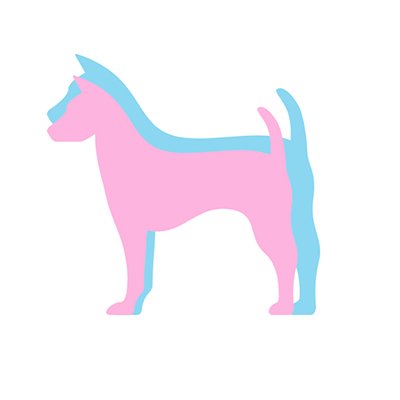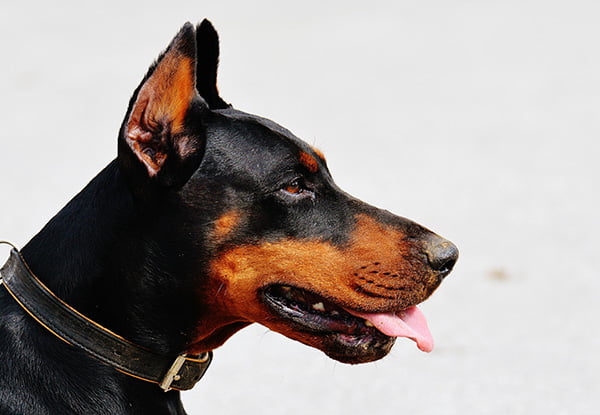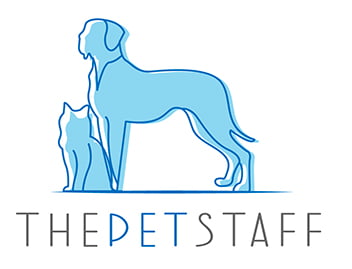If you are looking for an active, alert, and loving pup companion to bring on your many adventures, it may be that you are considering the German Pinscher dog. This medium-sized dog breed is full of energy and has seemingly endless stamina, making them perfect for active owners who need a dog who can keep up with them.
So is the German Pinscher right for you? Let's take a look.
Breed Characteristics
Temperament | Alert, fearless, and energetic |
Intelligence | High |
Affection/Friendliness | Affectionate and loyal |
Trainability | Highly trainable |
High | |
Exercise Needs | High |
Apartment Living | Can adapt |
Family Friendly | Yes |
Pet Friendly | Yes |
Drooling Level | Low |
Energy Level | High |
Loneliness Tolerance | Moderate |
Adaptability | Moderate to high |
Tendency to bark | High |
Origin of German Pinschers
The German Pinscher originated in Germany and began development in the 1800s and is generally believed to be the result of breeding various European farm dogs that were used to guard and herd. These multi-purpose farm dogs were very valuable on German farms, and their name, coming from a word that means to nip or seize, described their function well since they were partially useful in ridding farms of small pests like rats and mice.
The German Pinscher is among Germany's oldest breeds of many pinscher breeds. For a long time, German Pinschers and Schnauzers were categorized as the same breed, the German Pinscher being the short-haired version of the more long, wiry coat of the Schnauzer. After World War II, these breeds became on the verge of extinction.
However, as the German Pinscher was used to develop other dog breeds like the Doberman Pinscher, the Rottweiler, and the Miniature Pinscher, it began to be recognized by breed clubs as a unique breed. Founded in 1985, the German Pinscher Club of America is the official AKC National Breed Club for the German Pinscher. In 2003, the American Kennel Club recognized the breed as its own distinct breed.

Breed Overview
Height: 17-20"
Weight: 25-45 lbs
Height: 17-20"
Weight: 25-45 lbs
Breed Group
Working
Life Span
12-14 years
Coat
Short
Coat Length
Short
Hypoallergenic
No
Shedding Level
Moderate to high
Size
The German Pinscher is a medium-sized breed. Adult dogs grow to be between 17 and 20 inches tall and weigh anywhere from 25 to 45 pounds.
Personality
The personality of a German Pinscher is fairly intense, given their high energy levels. They are very affectionate and incredibly intelligent dogs and make loyal and loving companions.
Appearance
German Pinschers have medium-sized bodies that are lean and muscular. Their coats consist of short, smooth fur that can be black, fawn, or red, with tan or red markings. Sometimes you will see blue German Pinschers, but these are much rarer.
Temperament
German Pinschers have relatively intense temperaments, which don't make them the ideal dog for every situation. They are incredibly energetic and affectionate, so if they are trained early and socialized well, they can make good family dogs. However, their watchful nature can make them overly protective and even aggressive towards strangers. Socializing a German Pinscher puppy early on will be incredibly important to keep negative behaviors under control.
The German Pinscher temperament does not do great with small children or other pets due to their excessive energy, so they are better in families with older children. Due to a high prey drive, they are also not trustworthy dogs to have around other small animal pets since they may attempt to hunt them. If they are raised with other dogs, they may learn to get along well with additional dogs, but in general, they do best as single household pets. Recommend to be cautious when going to the dog park or walking with another dog.
Socializing your puppy early and consistently will go a long way to boosting these dogs' confidence and lessening their hyperactive vigilance, making them a bit more mellow and manageable socially.
Diet/Nutritional Needs
As with all dogs, German Pinschers need a diet of well-balanced and quality dog food. Most German Pinscher owners give their dogs two measured meals a day, but you should consult with your vet as to the quantity of food and type of food for your dog's specific age, size, and activity levels. Typically a growing Puppy needs more nutrition than an adult dog. It would be best if you were careful not to overfeed your dog with treats or human food since obesity can lead to a number of other health issues.
Activity/Exercise Needs
German Pinscher dogs are incredibly high energy and have pretty substantial exercise needs if they are going to remain happy and manageable. This dog breed should get at least an hour or two of vigorous exercise like running, jogging, long walks, biking, or hiking. Also, strive to stimulate your dog's mind with games like fetch or by involving your German Pinscher in dog sports and competitions like agility.
With their high prey drive and seemingly endless energy, these dogs easily become bored and quickly resort to troublesome behaviors like destructive chewing, whining, and pacing. Due to these very high energy levels and extensive exercise needs, they will not be a good fit for you if you lead a sedentary or relaxed lifestyle or can't provide lots of fenced and open space for a German Pinscher to run around in.
Grooming Needs
German Pinschers are very easy to groom and maintain. Their short coats are low shedding and only need to be brushed once a week. Even though they are low shedding, you still will need to deal with some level of dog hair. Seasonally you may notice more shedding, but adding an additional brushing day will help keep the mess under control. Depending on how dirty your pup gets, they can be bathed as needed or once a month.
Nails will be naturally worn down due to the high activity this breed requires, but they should still be checked once a month or so and trimmed as needed. The German Pinschers' ears should be examined weekly to check for irrational debris buildup or excessive wax. Aim to brush your dog's teeth once a day.

Source: Pexels
Adaptability
German Pinschers can be pretty flexible and adaptable dogs if they are trained thoroughly and socialized properly as puppies. They require active owners to thrive but otherwise are pretty easy to care for. Training is a must, however, since these dogs can be suspicious and even aggressive towards strangers and other animals.
German Pinschers do best when they are with their people and are the only pets in the home. This dog breed may thrive in apartment settings provided all their energy needs are being met but ideally have an enclosed space to explore and play in.
Trainability
German Pinschers must be trained if they are going to be polite socially. They are very intelligent dogs and are pretty easy to train, though they can be stubborn and cunning. It is important to be consistent with obedience training and not let your puppy get by with bad behavior. It would help if you established yourself as the leader without being cruel or harsh. Use positive training methods for the best results.
Starting your puppy as early as possible helps establish good habits that will make your dog better behaved as an adult. Be sure to start socializing as soon as your puppy is safe since this breed can be a bit antisocial and aggressive if not socialized fully early on. Putting your German Pinscher in a puppy kindergarten class and early socialization are recommended.
Life Expectancy
A healthy, well-cared-for German Pinscher can be expected to have a lifespan of about 12-14 years.
Potential Health Issues
When it comes to health, German Pinschers are pretty healthy. Like most pure breeds, however, it is subject to a few possible hereditary issues.
Hip dysplasia
Hip dysplasia is a relatively common genetic issue that results in the malformation of a dog's joints.
Von Willebrand's Disease
Von Willebrand's disease is a hereditary disease that affects the blood's ability to clot properly. This disease can be managed, but the condition is lifelong.
Eye Disease
Eye issues include problems like infection, allergy sensitivity, glaucoma, corneal ulcers, and cataracts.
Adverse Vaccine Reactions
Another possible issue to look for is negative responses to vaccines. This can include symptoms like lethargy, fever, change in eating habits, diarrhea, vomiting, facial swelling, itching, seizures, and more.
